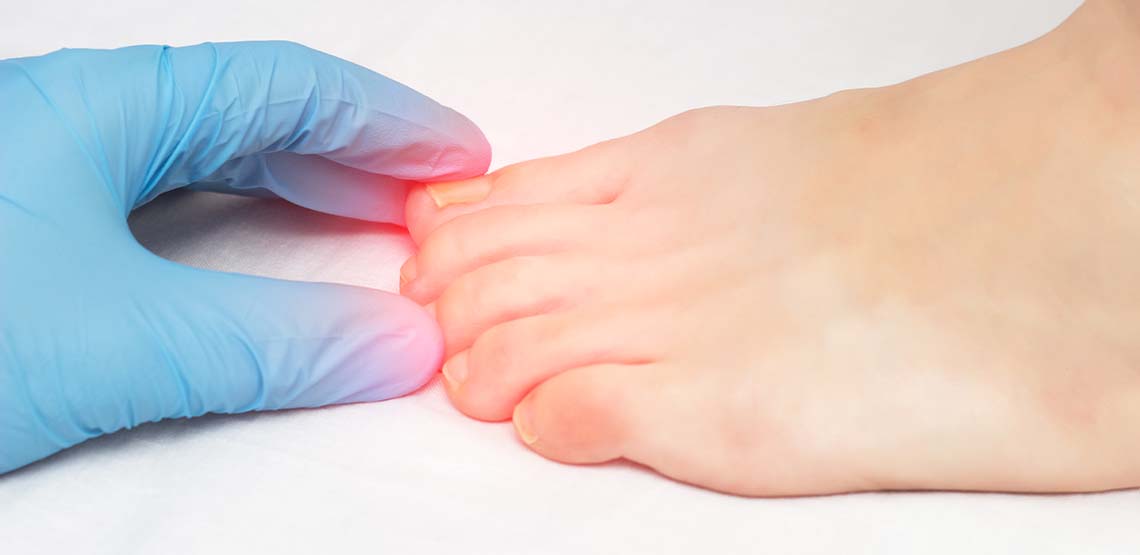How to Cure Nail Fungus
A fungal nail infection, onychomycosis, is a common infection that affects the fingernails and toenails, causing them to become, thick, discolored and more prone to cracking and breaking. Fungal nail infections are contagious and often spread from one nail to several others. In this article we will discuss how to cure nail fungus, including home treatments, oral and topical antifungal medications, photodynamic therapy and surgery.
Symptoms of Nail Fungus
Symptoms of nail fungus vary in severity and may include:
- Nail discoloration (white, yellow, or brown).
- Nail thickening.
- Nail cracking.
- Nail fragility.
- Nail distortion.
- Nail pain (in severe cases).
- Slight foul odor.
- Fungal skin infection of the foot, commonly between the toes (may accompany a fungal toenail infection).
While fungal nail infections can infect fingernails and toenails, toenails are more commonly affected.
Treatment Options for Nail Fungus
Unfortunately, fungal nail infections are difficult to treat, often taking several months to a year of treatment to go away, and in many cases, they come back after treatment.
1. Oral Antifungal Treatments
These medications, including terbinafine and itraconazole, are often used as a first choice of therapy because they tend to clear the fungal infection more quickly than topical treatments.
Oral antifungal medication helps replace the infected nail by helping the new nail grow without infection. These medications are typically taken for six weeks for a fingernail infection and 12 weeks for a toenail infection, but the full results of treatment are not seen until the new nail has completely grown in, which make take several months.
While these medications are often effective at eliminating fungal infection, they do come with a range of side effects, from a skin rash to liver damage. While taking oral antifungal medications, your doctor may recommend regular blood tests. It’s important to note that oral antifungal medications are not recommended if you suffer from congestive heart failure or liver disease.
2. Topical Nail Treatments
Topical nail treatments are often ineffective because penetration of the drug can be poor due to the nail being compact and hard. Even though results may be poor, your doctor may still recommend this type of therapy.
An antifungal nail polish (ciclopirox) may be painted onto the infected nails and surrounding skin every day for seven days. After the seven days, the piled layers are wiped clean and a new application week begins. Topical antifungal nail polish is often used daily for almost a year.
Additionally, an antifungal cream may be prescribed. The medicated cream is rubbed into the nail bed after soaking your feet and thinning your nails. This allows the medication to better penetrate through the hard nail surface to treat the underlying infection. Mild side effects, including burning, stinging and swelling, may occur with topical antifungal therapy.
3. Photodynamic Therapy
This type of therapy uses a combination of light irradiation and a photosensitizing drug that causes destruction of certain cells. Laser therapy, including lower-level laser and neodymiumyttrium-aluminum-garnet, focuses on inhibiting the growth of fungus. This type of alternative therapy avoids local and systemic side effects, but the research is limited on its use.
4. Surgery
Surgical debridement or removal of the infected nail may be recommended in cases where the nail is resistant to antifungal treatment.
5. Home Remedies
Oral antifungal treatment is often effective at treating fungal nail infections but is associated with numerous bothersome side effects, leading many people to turn to home remedies to treat their infections.
Some of the common home remedies that are used due to their antifungal properties, that have limited scientific evidence supporting their use, include:
- Baking soda.
- Menthol products.
- Vinegar.
- Garlic.
- Snakeroot extract.
- Essential oils (tea tree oil, oregano and lime).
Unfortunately, while many home remedies have been touted to treat fungal nail infections, most are not effective. Some may temporarily halt mild infections, but they are unlikely to treat the fungal infection and you are likely to need prescription therapy.
Preventing Nail Fungus
There are various steps you can take to protect your nails from developing a fungal infection, including:
- Keeping your hands and feet dry and clean.
- Keeping your fingernail and toenails short and clean.
- Wearing clean cotton socks and breathable shoes.
- Avoiding walking barefoot in public areas, such as swimming pools and public showers.
- Avoiding sharing nail clippers with others.
- Avoiding the use of nail polish and artificial nails.
- Making sure the salon you go to for your nails is using sterilized nail instruments.
In Conclusion
Nail fungal infections are a common condition that are quite contagious, like warts, and often spread from one nail to several others. Fungal nail infections are often difficult to treat, and may come back even after treatment. While many people turn to natural home therapies, these treatments are often not effective to treat the fungal infection. While the research for photodynamic therapy is promising, it is still limited, and as a result it is not a commonly used treatment modality for fungal nail infections. Prescription oral and/or topical treatments are often needed, and in some cases, surgery may be needed for resistant infections. Now that you know how to cure nail fungus, you can consult your doctor and choose the right option for you.
